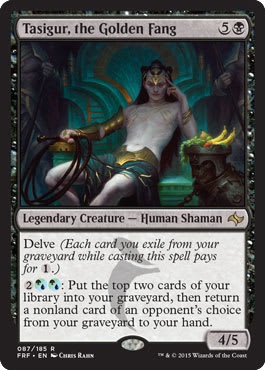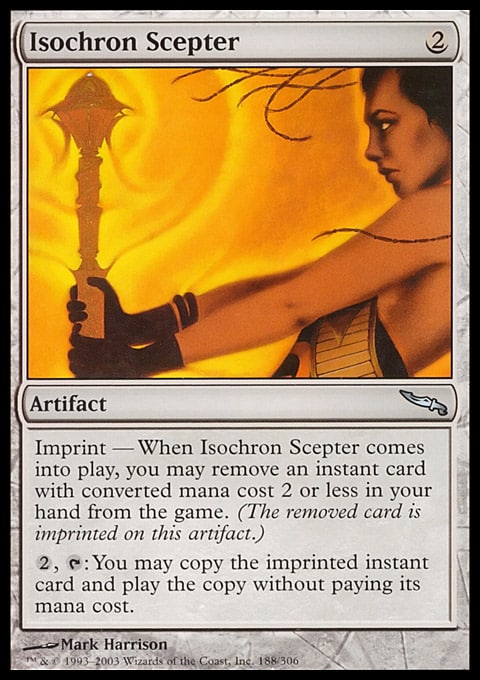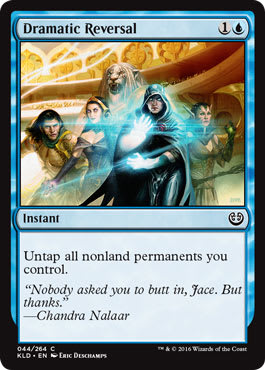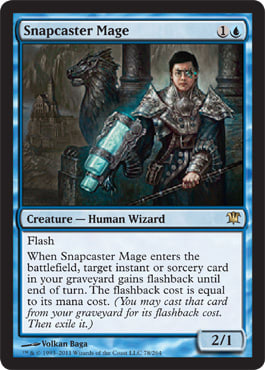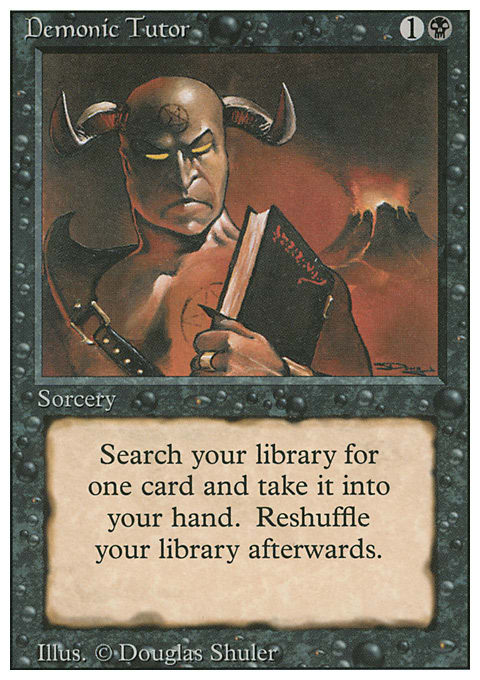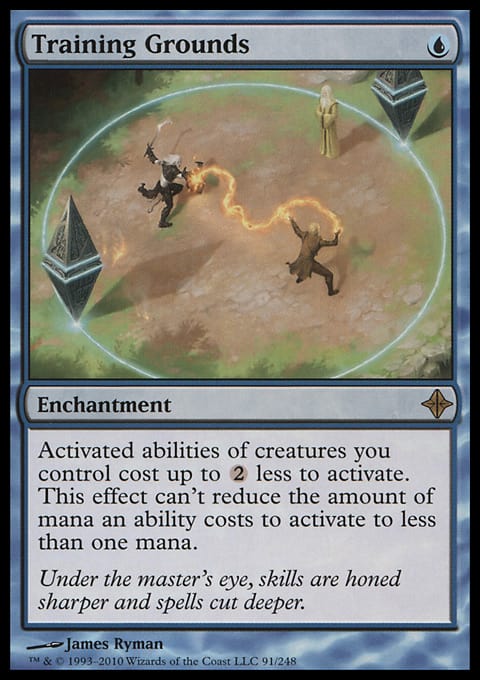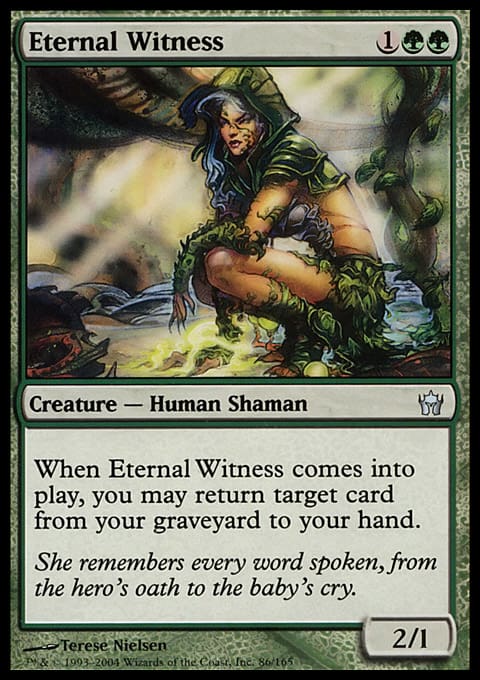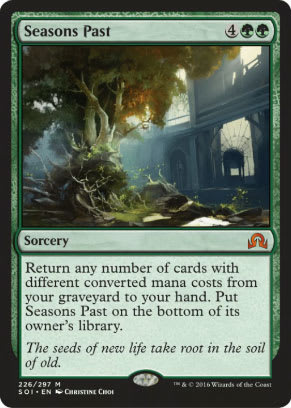
Classical Landscape by George Lambert (1745). Vraska, Golgari Queen by Livia Prima.
Last week I did my first ever "spotlight" column, in which I tried to give you a look at one of the decks from the Commander League I run. I enjoyed sitting down with Jared DeSousa and sharing what he could tell me about his Bruna deck, but it wasn't actually the best deck we saw in our League over the past year.
If measured by the number of points earned in our league's scoring system, one deck set a new record in points earned in a single day this past February. Today's column is a look at that deck and how its owner was able to pilot it in our admittedly semi-competitive meta to such great success.
To put this deck's performance in context, our league saw well over 100 players play at least one game with us, and we played two rounds of play almost every Saturday in 2018. There will be around 700 single day point totals turned in during the past year in our league and this deck topped them all.
The highest average point total for our 2018 season (with a minimum of 23 weekends of play) was just under 34 points and most players averaged in the 20s.
A 30 point day is a good day and a 40 point day is a great day in our point system. A 50 point day is rarified air - very few players ever manage to log a 50 point day in our League. Jared, the Bruna player I wrote about last week, only managed it once in 2018.
A 60 point day has only been done a handful of times.
A 70 point day?
You have to have everything go right, you have to be playing a deck that is uniquely suited for being able to earn points AND you need to be able to play the table in a way that leaves your opponents not hating you. That matters in our system, as some of the points you earn are gifted to you by your opponents.
The player behind this week's deck posted the following point totals last February.
61 - 73 - 67 - 31
Those first three weeks of jaw-dropping point totals were earned by Bryan Li and his Tasigur, the Golden Fang deck. On the final week Bryan switched decks from Tasigur to Gonti, Lord of Luxury, but his single month point total of 232 point is also a record for our league.
Meet Tasigur, the Golden Fang
This amazing deck was a bit of a surprise to us. We don't see a lot of truly competitive builds in our league. It's free and is more of a semi-competitive meta than a cEDH meta. This record-setting mark wasn't made by General Tazri, or the well-known and rightly feared partner Commanders, Thrasios, Triton Hero & Tymna the Weaver.
It was Tasigur, the Golden Fang.
Tasigur, the Golden Fang is a legendary Human Shaman who has 4 power and 5 toughness. He costs 6 mana, one of which must be Black, but he also has Delve. What that means is that you can exile cards from your graveyard to pay for the colorless mana of his casting cost. In many cases he will cost just 1 mana, as his Delve ability can be used to pay for his commander tax as well as his base casting cost.
Tasigur's "party trick" is a deceptively powerful one.
For 2 mana and two hybrid Simic (![]()
![]() ) mana, you can put the top two cards of your library into your graveyard and then return a nonland card of an opponent's choice from your graveyard to your hand. Giving you the ability to fill up your graveyard is nice, but to the untrained eye this doesn't seem overpowered. Because the choice of cards lies with an opponent, you might even think this would make Tasigur a bad commander. Your opponents don't want you to win, and they may not want you to get any advantage in the game whatsoever.
) mana, you can put the top two cards of your library into your graveyard and then return a nonland card of an opponent's choice from your graveyard to your hand. Giving you the ability to fill up your graveyard is nice, but to the untrained eye this doesn't seem overpowered. Because the choice of cards lies with an opponent, you might even think this would make Tasigur a bad commander. Your opponents don't want you to win, and they may not want you to get any advantage in the game whatsoever.
What this unique ability does is make Tasigur the perfect commander for a highly interactive, political control deck. Tasigur is actually listed as Competitive on the well-known TappedOut.net list of EDH Generals ranked by power level. You can win with Tasigur, but I'm not sure you play Tasigur if you don't want to work with your tablemates. I think if Tasigur is built and played properly, you're going to find yourself making the occasional deal with a tablemate.
How do you play a deck where you're making deals and not turn the table against you? The answer is simple - you set yourself up to be able to respond to potential game-ending threats by running a lot of answers.
When the game is going to end, it's going to end on your terms.
If there are more than two players left and someone is going for the win, you ought to be able to get another one of the players who is about to be killed to give you what you need out of your graveyard to stop the threat. Whether that answer is a counterspell, a Cyclonic Rift or just good old fashioned targeted removal, you should be able to get them to give you what you need. It's a different kind of control deck, but it's a control deck and control can be very powerful in Magic.
Meet Bryan Li
So you've met Tasigur and you understand how he works, but you might not understand why this deck was able to perform so well. There are other powerful decks in our meta and many other capable players. They don't all play their best decks each month. It's a free league with nothing but bragging rights at stake, but we all still play to win. I went over Bryan's scoresheets and he outplayed many of the league's best players over the course of the month, including the previous month's winner, the 2 top players from 2016, the top player from 2017, a player who would go on to win May and June, and even Jared, our resident Bruna, Light of Alabaster player.
I think the secret of this deck's success lies in no small part with its pilot, Bryan Li.
I don't know Bryan really well, but I've enjoyed his company in Commander games off and on over the past few years. I found him to be soft-spoken, polite, contemplative, and generally a good tablemate. I've never seen him play in a style that involves threatening opponents or being overly aggressive and he seems to take both winning and losing gracefully.
Bryan has been a Magic judge since Dragons of Tarkir and his role as a judge in the community is something that helps to shape his approach to the game. It isn't good for a judge to exhibit poor sportsmanship or act like a bully when they play, and from what I've seen, Bryan does neither. The way you carry yourself in games you play will affect how other players view you when you have to interact with them as a judge. Bryan seems to understand this and takes it seriously. He plays with honor, he plays with respect for his opponents and for the game, and at times even plays with a sense of humor.
He generally doesn't present himself as a threat or try to intimidate anyone. Bryan instead tries to fly under the radar, both because it suits his nature and because he has to when playing Tasigur. The concept of the deck is that it is a politics deck. You actively work with your tablemates to give the table what it wants, which is generally for nothing game-ending to occur.
Bryan likes theme decks and enjoys picking a theme and going with it. He once built a deck led by Anafenza, the Foremost that was "four" tribal. It had as many instances of "4" as possible crammed into it. Bryan's into Math, and I believe he's even pursuing a degree in Mathematics. Unsurprisingly, no opponent ever picked up on, or commented about, the theme in his Anafenza deck.
For Bryan, the strategic side of the game of Magic is where it's at. His decks have a lot of interaction and are never "linear". He's a control player at heart and runs a lot of answers and removal. His favorite deck is actually his Gonti deck, but it isn't quite as well suited for racking up points in our system as Tasigur.
How He Did It
If you think Bryan carefully planned out how to create a deck that would best leverage our complex scoring system so that he could try to earn as many points as possible in a given game, I'd understand completely. A smart deck-builder might do just that, and Bryan is nothing if not a smart, if occasionally whimsical (cough... Anafenza the FOURmost... cough...), deck-builder.
The answer is surprising, but also makes a lot of sense.
He actually finished up the deck about 15 minutes before the first round of play last February. He was not thinking about the scoring system at all. He was building a deck designed to do one thing and do that one thing well, carefully, and with ample protection.
The deck's goal was to land this combo.
The combo involves using Isochron Scepter to cast Dramatic Reversal, which untaps all of your nonland permanents. If you have enough artifacts or mana-producing creatures ("mana dorks") to create more than 2 mana, you can use this combo to generate infinite mana. It's called "dramatic scepter" and is well known both in and outside of competitive circles.
Tasigur, the Golden Fang has an ability that will let you put two cards of your library into your graveyard and then return a nonland card of an opponent's choice from your graveyard to your hand. What that means is that with infinite mana you can dump as much of your library into your graveyard as you like, and for every two cards you entomb, you'll get a nonland card put into your hand.
The deck is full of enough tutors and additional recursion that you should be able to set yourself up to get key cards to turn your combo into a win even if your opponents try to put unhelpful cards into your hand. Eventually you'll "get there". It's got enough counterspell support to protect the win. It's got enough interaction to prevent anyone else from winning.
This strategy is relatively easy to disrupt, but hard to see coming.
This deck's "dramatic scepter" combo just needs mana rocks to be able to go off and those are commonplace in Commander. You're unlikely to raise an eyebrow at an opponent with a Sol Ring and a Signet on the field, and you're probably not going to tutor for artifact removal if you do notice that Bryan has enough artifacts to combo off.
Key Cards
For each spotlight column I ask the deck-builder what the key cards are in their list.
While Isochron Scepter and Dramatic Reversal are the heart of this deck, there are other cards that are also very important to its success, particularly in the context of our Commander League.
Muddle the Mixture is a counterspell, but it has Transmute and just happens to be 2 CMC. That means it can be used to go get either half of our combo along with other very strong cards like Snapcaster Mage and Demonic Tutor. If this combo doesn't land, it's going to be hard to win the game, so these three cards all really pull their weight in this deck.
If Bryan had just taken his infinite mana and funneled it into a Walking Ballista again and again, it might have won him some games, but his record point totals were fueled by winning games by having the most in every one of our "Size Matters" category.
Our scoresheet has the following section in it:

This means Bryan would usually have the most cards in hand, the creature with the highest power & toughness, the most creatures, the highest life total, the most lands, the most artifacts, the most enchantments and the most planeswalkers on the field at once!
The "High Water Mark" reference means that he had the most for a category during the time that he was in the game. If you lose and someone surpasses one of your totals for a "Size Matters" category, you still get the point, but the other person can also claim that same point.
Walking Ballista, which Bryan doesn't run in his list, isn't going to do all that for you by a long shot, though it could definitely use infinite mana to kill the table and get the highest power and toughness points.
Bryan's Tasigur deck is full of counterspells, removal and artifacts, but it isn't running any big creatures and it isn't running a lot of creatures or creature token generators. He's only running five Enchantments and he isn't running a single Planeswalker.
So how was he able to get all of those points in most of his games?
Villainous Wealth is a Sultai (![]()
![]()
![]() ) sorcery that lets you cast spells out of an opponent's library. When you make infinite mana and run a deck with a decent recursion package, you can use it with infinite mana to play everyone else's deck in their entirety and then win using THEIR wincons. You actually don't even need to run your own wincons because everyone else's deck will have plenty of options for you to choose from.
) sorcery that lets you cast spells out of an opponent's library. When you make infinite mana and run a deck with a decent recursion package, you can use it with infinite mana to play everyone else's deck in their entirety and then win using THEIR wincons. You actually don't even need to run your own wincons because everyone else's deck will have plenty of options for you to choose from.
That wonderful little X spell might be the cherry on top of this delightful Sultai sundae but you still need to get to the point where you can hit your combo and draw into or tutor for your wincon, whatever it might be. There are some cards that are essential to the process of getting the game to go long enough that you can win.
Training Grounds will halve the cost of each of your Tasigur activations. What that means is that if you try to work with one opponent to get them to give you a card you need to "save the table" and for some strange reason that player won't play ball and give you what you need, you'll probably have enough mana to try to get someone else to give you the card you need. Sometimes players cut deals with each other or just don't want to work with you for some reason, and having a 2 mana Tasigur activation gives you much more flexibility when using him. Having more activations also fills up your graveyard, which in turn will set you up to be able to use Tasigur's Delve ability to pay less mana if you need to re-cast him.
Eternal Witness and Seasons Past are incredibly important for recurring key cards and looping Villainous Wealth if you're at the point where you are comboing off. If all goes well, your opponents are going to have to exile Isochron Scepter if they want to beat you, because you are well-prepared to go get your combo out of the graveyard if it got milled or disrupted.
One last key card is actually more of a "pet" card for Bryan. He loves it because much like Dramatic Reversal, on its own it isn't a particularly good card but in the right context it can really do some work.
Loaming Shaman will let you shuffle any number of target cards from your graveyard back into your library. This lets you exert a lot of control over what options your opponents have for cards they are going to give you from a Tasigur activation. It also lets you put key cards back into your library if you're sitting on a tutor and really need to go get something that's momentarily stuck in your graveyard.
Playing Casual Decks Competitively
One of the most interesting things Bryan told me when we talked about his deck is that his core philosophy for playing Commander is that he wants to "play casual decks competitively".
What that means is that he doesn't want to win because he's got the best general. If he's running a competitive Commander, which he is, he doesn't want to win because he's running the best cards or the most expensive list.
I took a moment to compare Bryan's list with the two competitive Tasigur lists that are linked to on the TappedOut.net list of generals, ranked by power level.
ShaperSavant, a moderator on the CompetitiveEDH subreddit put together a list for Tasigur called "Scepter Control". It has a CMC of 1.88 and as of this writing the TCG price for his list was $4,686. LabManiac_Cameron, a moderator of the well known cEDH group LabManiacs, put together a list for Tasigur called "Season Pastigur". Cam's list has a CMC of 2.11 and as of this writing its TCG price was $3,412.
Bryan's list, included below, has an average CMC of 2.95 and a TCG (for an apples-to-apples price comparison) price tag of $501. Those numbers are good, but it definitely isn't a "cEDH" deck by the standards of the current competitive meta. Bryan isn't running ABUR duals, Mana Crypt, Force of Will or many other cards that would be strict upgrades and lower-mana-cost options to make his deck better. Bryan is a judge and could get his hands on those kinds of cards if he wanted to, but he doesn't want to leave opponents with the feeling of having been outspent in a format that for many can feel like a battle of whose wallet is fatter.
He wants his games to be about the play, not about the budget.
Our league system includes a category of points that are awarded to you by your opponents at the end of each game. We call them "Gen" points, as shorthand for "generosity" and because we play at a store called NexGen Comics. Players can award an opponent anywhere from 0 to 4 Gen points. Bigger tables can net you more Gen points, but crushing tables typically results in fewer Gen points. Players don't usually enjoy getting their butts kicked in a game, and it takes just the right approach to be able to win but not have your winning negatively affect your day's Gen point total.
Last February Bryan averaged just over 11 Gen points. If a player in our League averaged 11 Gen points over the course of an entire year, and had attended enough weekends of play to qualify, they would wind up winning the end-of-year award for the top average Gen points in 2018. What that means is that Bryan not only played well, but in a quantifiable way he was able to be a good tablemate.
I think Bryan's approach of playing casual decks competitively is part of how he was able to do that. He may have a pleasant demeanor and be polite and well-mannered, but he also never left anyone with the feeling that he had simply spent his way to victory. That might not matter to you, but there are plenty of casual players who don't appreciate having to look across the table at a Mana Crypt, Gaea's Cradle or Candelabra of Tawnos. I suspect Bryan also enjoys the challenge of having to overcome the kind of disadvantage that a semi-budget deck can present.
It is worth mentioning that Tasigur's role of forcing you to work with your tablemates to answer threats probably encourages them to be more generous with the Gen points everyone has to award after the game.
You might have been crushed in the end by Bryan's game-winning combo, but it was slightly hilarious to see him play the entirety of everyone else's deck and he did work with you to stop that other guy who tried to combo off on turn four or drop a Craterhoof on turn seven. That kind of cooperation engenders good feelings and camaraderie and few players will actually blame someone for winning the game in the long run, especially if it had interesting twists and turns along the way. Tasigur plays uniquely well to create that kind of game.
The Decklist
This deck should be relatively easy to play if you are used to playing a control game. You want to absolutely avoid trying to go off without counterspell backup, and you also need to work with the table to get to the point in the game where you can go for the win.
Tasigur, the Golden Fang | Commander | Bryan Li
- Commander (1)
- 1 Tasigur, the Golden Fang
- Creatures (14)
- 1 Clever Impersonator
- 1 Deadeye Navigator
- 1 Diluvian Primordial
- 1 Eternal Witness
- 1 Greenwarden of Murasa
- 1 Loaming Shaman
- 1 Progenitor Mimic
- 1 Ramunap Excavator
- 1 Rashmi, Eternities Crafter
- 1 Sakura-Tribe Elder
- 1 Sidisi, Brood Tyrant
- 1 Snapcaster Mage
- 1 Solemn Simulacrum
- 1 Tireless Tracker
- Instants (20)
- 1 Counterspell
- 1 Cyclonic Rift
- 1 Dig Through Time
- 1 Disallow
- 1 Disdainful Stroke
- 1 Dissipate
- 1 Dramatic Reversal
- 1 Fact or Fiction
- 1 Hero's Downfall
- 1 Krosan Grip
- 1 Mental Note
- 1 Muddle the Mixture
- 1 Murderous Cut
- 1 Nature's Claim
- 1 Putrefy
- 1 Reality Shift
- 1 Silumgar's Command
- 1 Swan Song
- 1 Thought Scour
- 1 Vampiric Tutor
- Sorceries (13)
- 1 Damnation
- 1 Demonic Tutor
- 1 Gitaxian Probe
- 1 Increasing Ambition
- 1 Mulch
- 1 Ponder
- 1 Preordain
- 1 Seasons Past
- 1 Sleight of Hand
- 1 Splendid Reclamation
- 1 Traverse the Ulvenwald
- 1 Treasure Cruise
- 1 Villainous Wealth
- Enchantments (5)
- 1 Animate Dead
- 1 Mystic Remora
- 1 Necromancy
- 1 Phyrexian Reclamation
- 1 Training Grounds
- Artifacts (11)
- 1 Coalition Relic
- 1 Commander's Sphere
- 1 Crucible of Worlds
- 1 Dimir Signet
- 1 Fellwar Stone
- 1 Golgari Signet
- 1 Isochron Scepter
- 1 Mimic Vat
- 1 Simic Signet
- 1 Sol Ring
- 1 Thought Vessel
- Lands (36)
- 3 Forest
- 5 Swamp
- 6 Island
- 1 Blooming Marsh
- 1 Bojuka Bog
- 1 Breeding Pool
- 1 Command Tower
- 1 Drowned Catacomb
- 1 Evolving Wilds
- 1 Hinterland Harbor
- 1 Llanowar Wastes
- 1 Misty Rainforest
- 1 Opulent Palace
- 1 Overgrown Tomb
- 1 Polluted Delta
- 1 Reliquary Tower
- 1 Temple of Deceit
- 1 Temple of Malady
- 1 Temple of Mystery
- 1 Terramorphic Expanse
- 1 Underground River
- 1 Verdant Catacombs
- 1 Watery Grave
- 1 Woodland Cemetery
- 1 Yavimaya Coast
Bryan did tell me that while this deck has done well in other competitive groups, it was never quite as dominant as it was during its first week of Commander league play. That could be because his friends and tablemates learned what the deck was all about and were better prepared for it, or it might just be the result of our league having a wide range of decks and power levels.
If you wanted to upgrade this list, you could definitely drop some money into the land base, throw in some high-priced mana rocks and some more expensive counterspells. You could also just drop enough money to buy a cheap used car and pick up one of the "true" cEDH lists I linked to earlier in the article. Are you the kind of player who wants to drop mad cash and play the best possible cards, or do you like the challenge Bryan likes to give himself?
Can you play a casual deck competitively?
Pick up this deck if you like control, want to work with the rest of the table (until you want to win) and enjoy that kind of challenge.
Final Thoughts
Over the past year I've written about a lot of decks, many of which I have built, played and won games with. Some of my decks have even been wildly successful, but few things have made me happier than to be able to put a spotlight on some great decks built by great players I actually get to play with.
Tasigur and Bruna are very different generals and lead very different decks, but I've seen both perform really well in our EDH league. If you've enjoyed reading these spotlight articles, I expect them to continue in 2019. I doubt I'll have a spotlight column for you more than once a month, but you can look forward to more of them in the future.
That's all I've got for you today. Thanks for reading and I'll see you next week!














